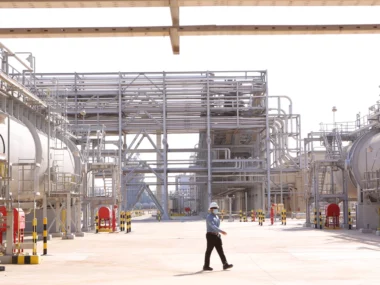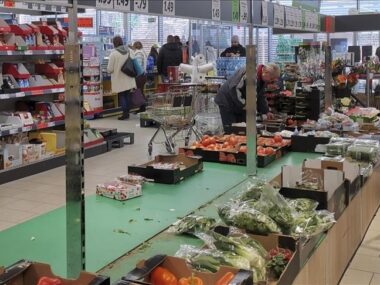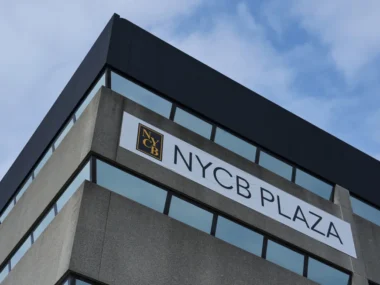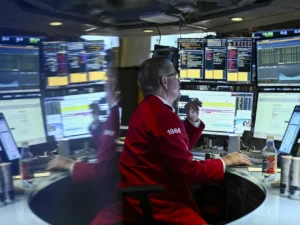Wholesale inflation in the US moderated as anticipated in July, following an unexpected spike the previous month. This sets up a pivotal release on Wednesday.
The Producer Price Index (PPI), which measures price changes from the perspective of producers and manufacturers, increased by 2.2% over the past year, down from June’s 2.7%. Monthly, prices rose by 0.1%, slower than June’s 0.2% increase.
Economists had projected a 0.2% monthly rise and a 2.3% annual increase, according to FactSet estimates.
Following the inflation data, the Dow surged 409 points (1%), the S&P 500 gained 1.7%, and the Nasdaq Composite rose 2.4%.
The PPI is a leading indicator for future retail inflation. On Wednesday, the BLS will release the Consumer Price Index (CPI) for July, which will offer further insight into consumer price trends.
The modest PPI increase was mainly due to a 0.6% rise in goods prices, while services prices fell by 0.2%, largely due to a correction in trade services. Excluding energy and food prices, core PPI was unchanged for the month, reducing the annual gain to 2.4%, the lowest since March.
Chris Larkin of E*Trade noted that the PPI data offers preliminary signs of easing inflation and might be a positive precursor to Wednesday’s CPI report.
Attention is focused on the CPI.
This week’s inflation figures, particularly Wednesday’s CPI report, are highly anticipated following last week’s surprising weak jobs data that unsettled the markets.
While the PPI is a key inflation gauge, it often takes a backseat to the CPI, which is released a day later. This month, however, the PPI’s role as a precursor has highlighted the importance of the CPI report.
Economists predict that the CPI will show ongoing but gradual disinflation. The July CPI is expected to rise by 0.2% from June, driven partly by higher gas prices, while annual inflation is likely to hold steady at 3%. Core CPI is forecasted to increase by 0.2% monthly but slow to 3.2% annually.
The headline CPI might exceed expectations due to reduced gas price pressures compared to May and June. However, food prices are expected to remain stable, balancing out the energy price increases.
Key to watch is shelter inflation, a significant factor in overall inflation. Although it has slowed recently, the CPI’s measure of housing costs is beginning to align with the slower rent increases seen in reality. In June, the shelter index rose by just 0.2%, the slowest increase in three years, with annual hikes at 5.2%, the lowest in two years.
Lydia Boussour from EY-Parthenon anticipates that this trend will continue. Based on current inflation trends and a gradually slowing economy, she forecasts three quarter-point rate cuts from the Federal Reserve by the end of the year and an additional 1.25 points of cuts in 2025.
What if the CPI comes in hot?
A single month’s data isn’t enough to establish a trend, but if July’s CPI rises more than expected, it might increase investor anxiety and trigger concerns about stagflation—a difficult economic situation with declining growth and rising inflation. Andy Schneider, senior US economist at BNP Paribas, believes these fears are unwarranted.
Schneider pointed out that the current 4.3% unemployment rate, while recently increasing, is still low compared to the past 50 years. Additionally, inflation has significantly decreased from its peak in June 2022. New data from the Federal Reserve Bank of New York shows that consumers’ three-year inflation expectations dropped to 2.3% in July, the lowest since the survey began in 2013. One- and five-year expectations remained stable at 3% and 2.8%, respectively.
Schneider noted that high inflation expectations are crucial for a stagflation scenario. Even Federal Reserve Chair Jerome Powell indicated in May that he doesn’t foresee stagflation. An uptick in inflation is unlikely to alter the Fed’s plans to ease monetary policy, with a rate cut expected at the September meeting.











